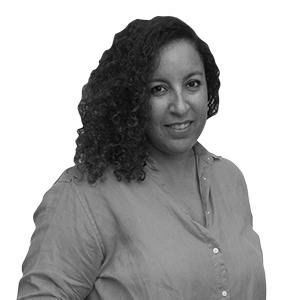Teachers soles before diversity


Diversity, as actress Mina El Hammani said in an interview, is reality. In and of itself, it is neither good nor bad, but rather a characteristic of today's world and of open, globalized societies. There's no need to exalt or stigmatize it; in my opinion, if it exists, what we need to do is recognize it in the sense of admitting that we come from different backgrounds, religions, cultural traditions, and phenotypes. And recognition doesn't come, as in multicultural societies, from exalting symbolic elements to the detriment of the material conditions in which people live. As children of immigrants, we don't want to be turned into a bright spot that brightens a supposedly uniform landscape, but rather to be equal in rights and duties to other citizens. And as workers, we want our economic contribution to be valued. Celebrating diversity, as anthropologist Sílvia Carrasco said the other day at the meeting of Feminists of Catalonia, without providing resources is like launching empty slogans that do nothing to improve things or solve the specific problems that exist in certain social contexts. In Catalonia, we have no shortage of plans to promote inclusion and grounding, and I don't know how many other things expressed in convoluted language that no one understands, a bureaucratic cacophony of good intentions that often remain on paper.
If you want to understand how complicated managing diversity is, you only have to talk to teachers who work in schools located in neighborhoods with a majority immigrant population. The children and their backgrounds, of course, are not the problem; the problem is that teachers cannot do their jobs properly, that they have to address social issues that go far beyond teaching what they should teach. And it's not just a matter of financial resources (which is also a problem), but of support at other levels and general plans that help us know where to go and what to do. There are inventions that have worked reasonably well. When I worked as a cultural mediator in education, drop-in classrooms were a magnificent resource because they allowed newly arrived students to be taken out of class to teach them the language and adapt the content until they had enough autonomy to return to their assigned classroom. I was also fortunate enough to witness the work of a director, Carme Carbonell, at a school, La Sínia, who turned things around from top to bottom, establishing alliances and working together with social services, the CAP (Center for Primary Education), neighborhood associations, and even the senior center. But she was a person with a very strong vocation and a level of commitment and dedication to her work that far exceeded the average. A bit of a heroine. And of course, education shouldn't depend, at this time, on individual courage, but on clear general guidelines. Regarding feminism, we also encounter teachers who do what they can in environments that are either resistant to equality between men and women or openly hostile to these values. What can I do if I have a girl in class who not only wears a mask but doesn't attend leisure activities, doesn't go swimming, or doesn't go to summer camp? This is a question teachers often ask me, and I have to answer that they can't do anything, because legally, only families have the obligation to send girls to school, but there's no regulatory framework to guarantee their normal development alongside their classmates. If parents are even remotely willing, they may be able to negotiate and try to convince them, but always with their shoulders to the wheel because, although it may not seem like it, school doesn't guarantee equality for girls. Just as it doesn't guarantee that there won't be segregation based on origin or social class.


